If you’re a cheese lover (and let’s face it, most of us are), then you’ll want to get to the nearest Whole Foods Market immediately.
Not only does WFM have both local and international cheese, but most of the cheeses are organic and free of rBSTs (recombinant bovine growth hormones…ew). Plus, WFM refuses to sell any cheese that contains artificial flavors, colors or preservatives. Sounds like an overall win.
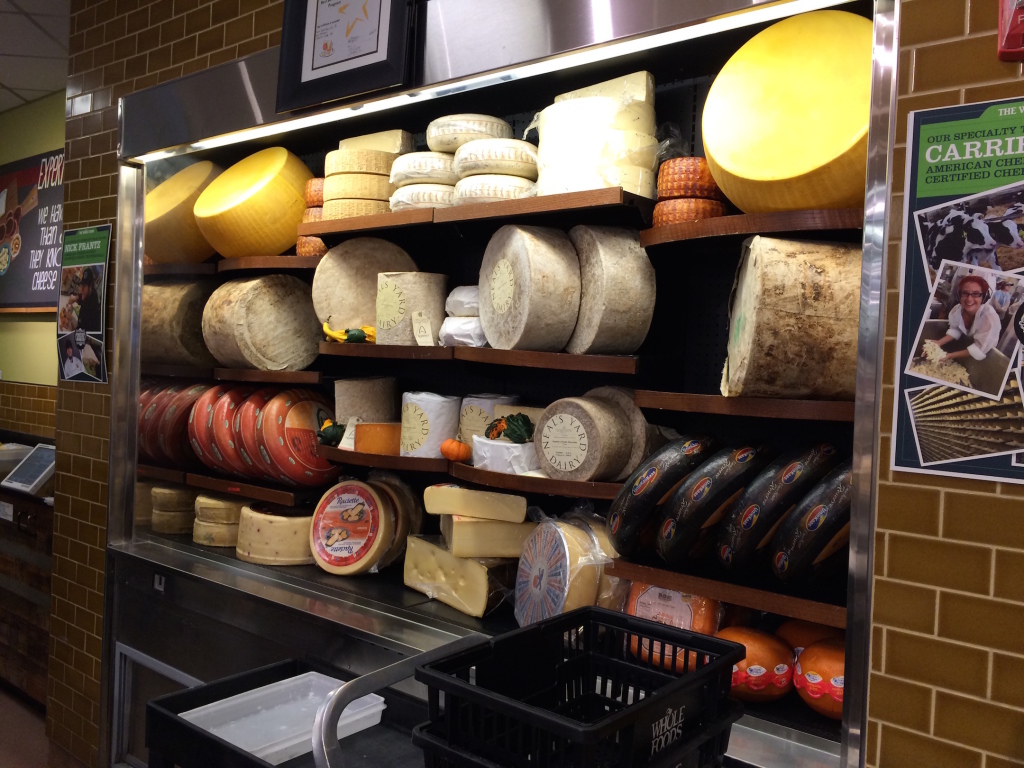
Photo by Juliet Paterek
But it’s more than the overwhelming options that makes WFM’s cheese department worthy of praise. The men and women behind the counter are super friendly and more than willing to help you pick the perfect slice, wedge, or wheel (not to mention, they’re happy to dole out free samples if you ask.)
I had the pleasure of meeting with two WFM employees, Karen and Josh, who made my experience in the WFM-Charlottesville cheese department an unforgettable one. While sampling my way through the display case, these two gave me the lowdown on all things cheese. Here’s a SparkNotes summary of what I learned:
Cheese 101
Cheese falls into seven categories based on its texture and the process in which it’s made.
- Fresh: These cheeses have no rinds (i.e. the hard shell). Examples include fresh mozzarella, ricotta, cream cheese, feta cheese and goat cheese.
- Semi-Soft: Ideal for making a sandwich, semi-soft cheeses are great for melting and eating out of hand. This category includes Gouda, Provolone, Havarti and Jack.
- Semi-Hard: All you need to know is that cheddar is the king of this category. But it also includes my personal favorite cheese, Sartori BellaVitano Balsamic, which is seen below.
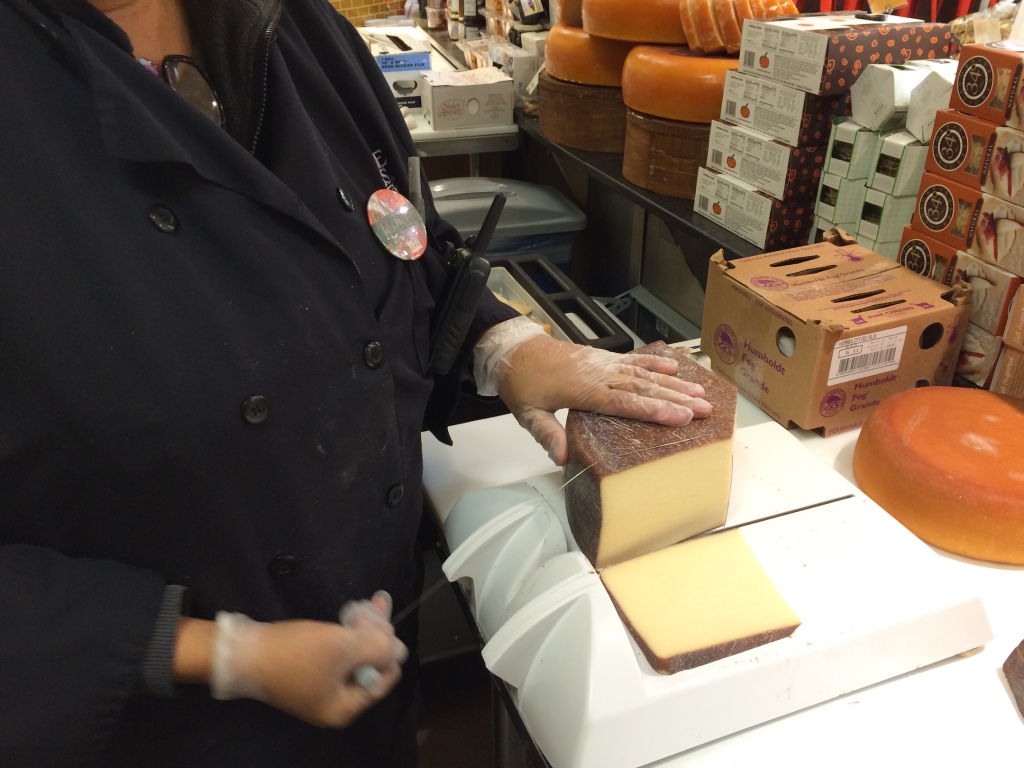
Photo by Juliet Paterek
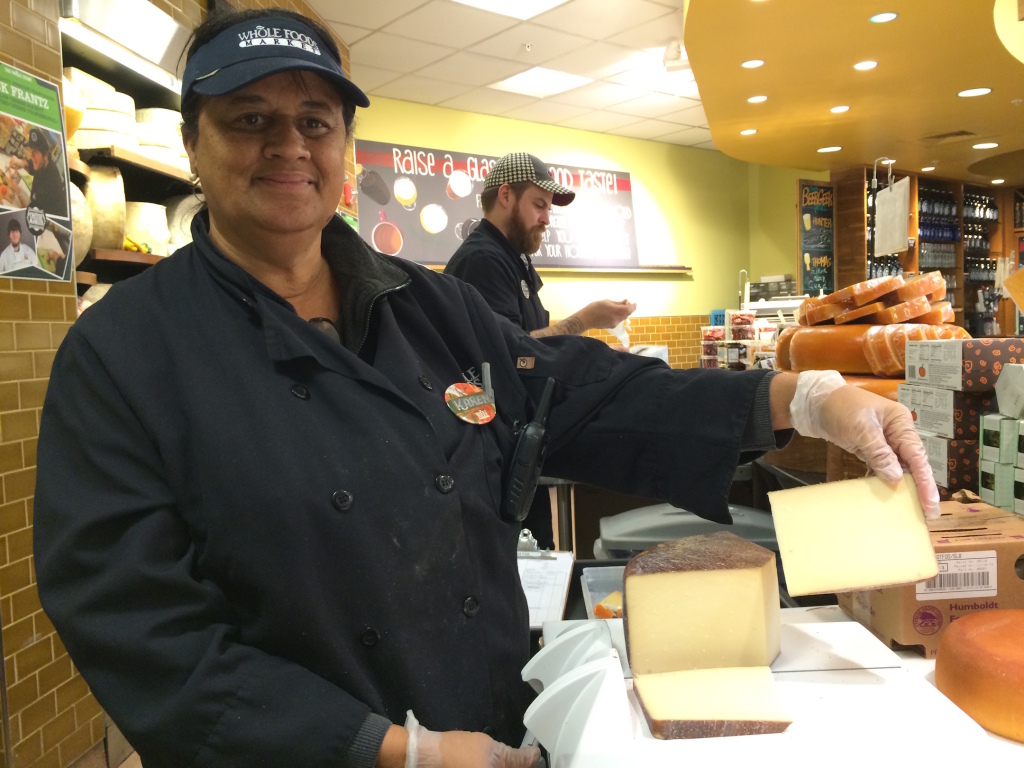
Photo by Juliet Paterek
- Hard: This category consists of grating cheeses like Asiago and Parmesan.
- Washed-Rind: Cheese of the washed-rind category absorbs salt — and sometimes beer, wine or liquor — from the brine. Examples include Muenster, Limburger and Taleggio, which is shown below.
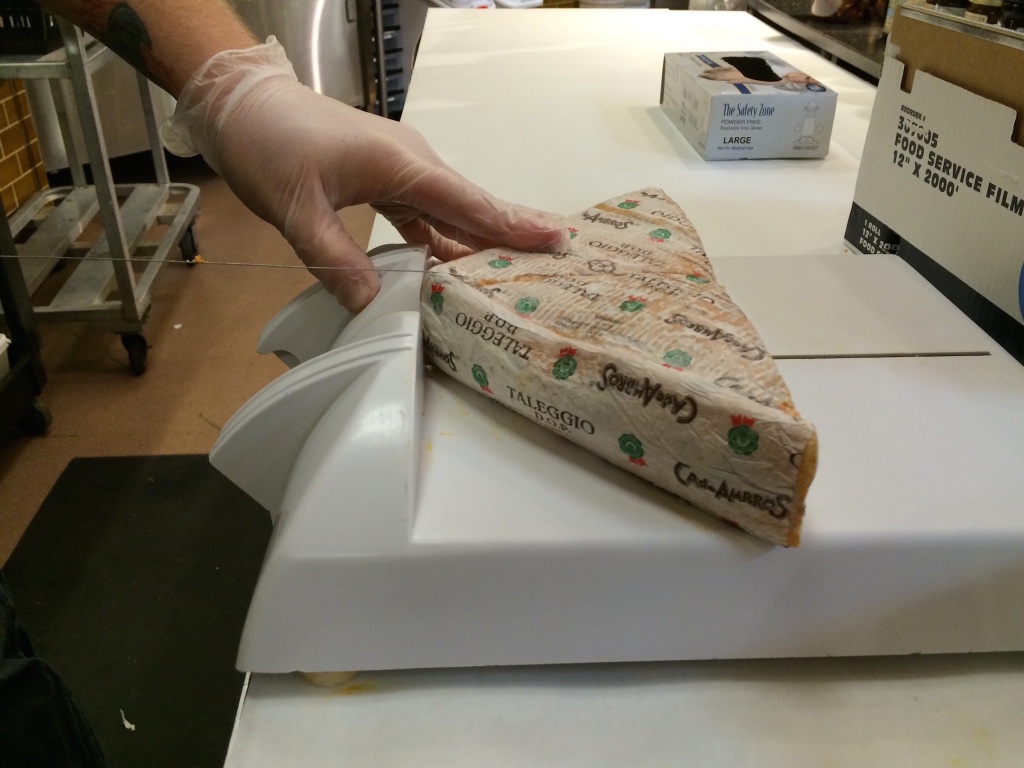
Taleggio cheese being cut; Photo by Juliet Paterek
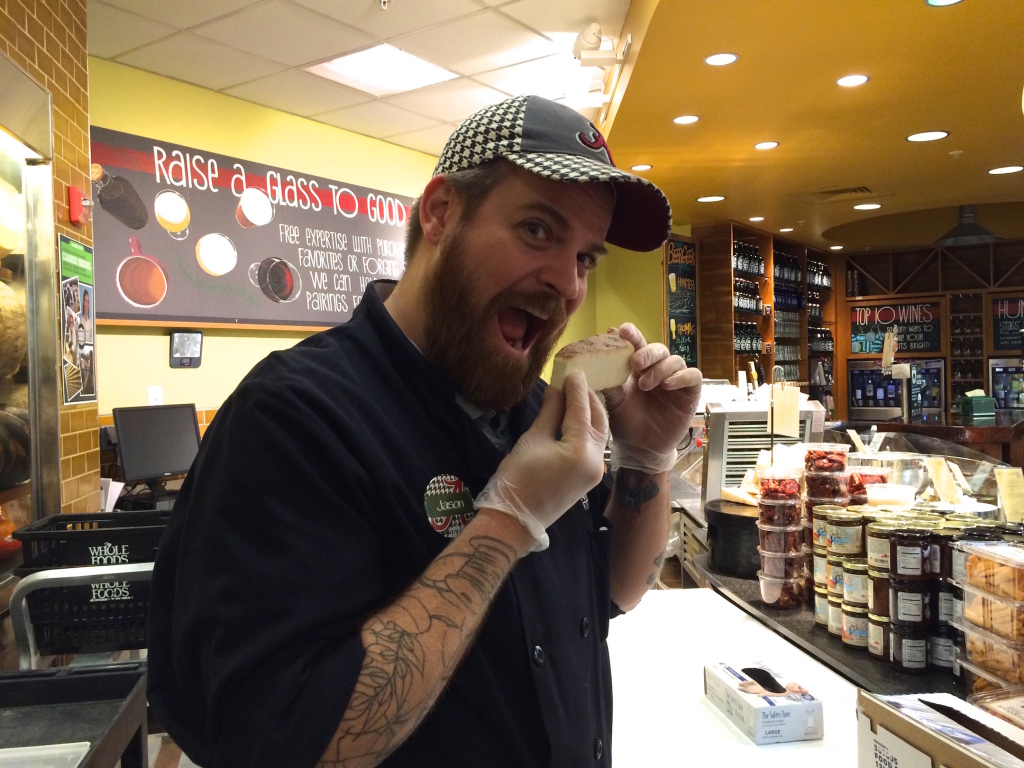
Photo by Juliet Paterek
- Bloomy-Rind: These cheeses are exposed to mold spores to create a fuzzy, edible rind on the outside. Some samples include Brie and Camembert, which most people indulge in for the creamy texture.
- Blue: Yup, blue cheeses gets their own category. Dressed in blue mold, this category includes Stilton and Maytag Blue.
Cheesy Favorites from WFM’s Staff
Karen, who has been working part-time at WFM for 16 years, recommends everyone buy Saint Angel, a soft cheese made from comes from cow’s milk. Karen claims it’s a “great holiday cheese” and its flavor can be enhanced with any kind of fig spread.
“I promise it’s really good and always a crowd pleaser,” she says. After sampling this cheese, I can attest to that.
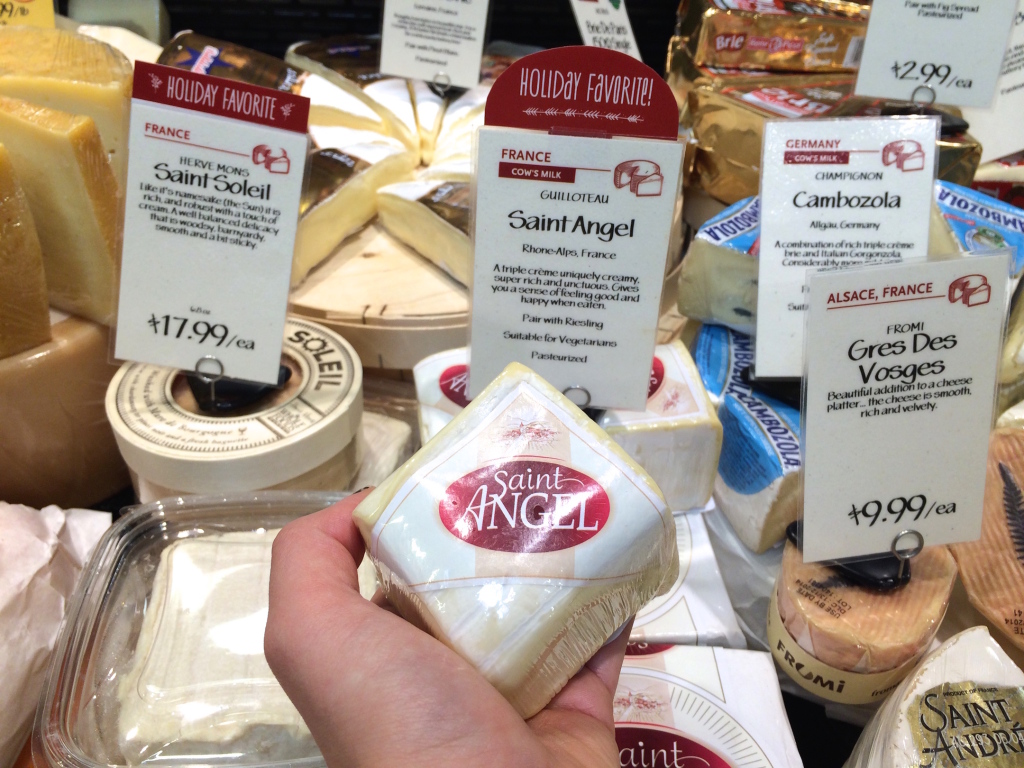
Photo by Juliet Paterek
Josh is from Alabama and has been working at WFM for a little over 3 years. He didn’t have to think twice about his favorite cheese, Pecorino Ginepro, which is “very dry, yet rich and complex.” He adds that Pecorino Ginepro is made from sheep’s milk and aged in wine barrels with balsamic and juniper berries. Hot damn,
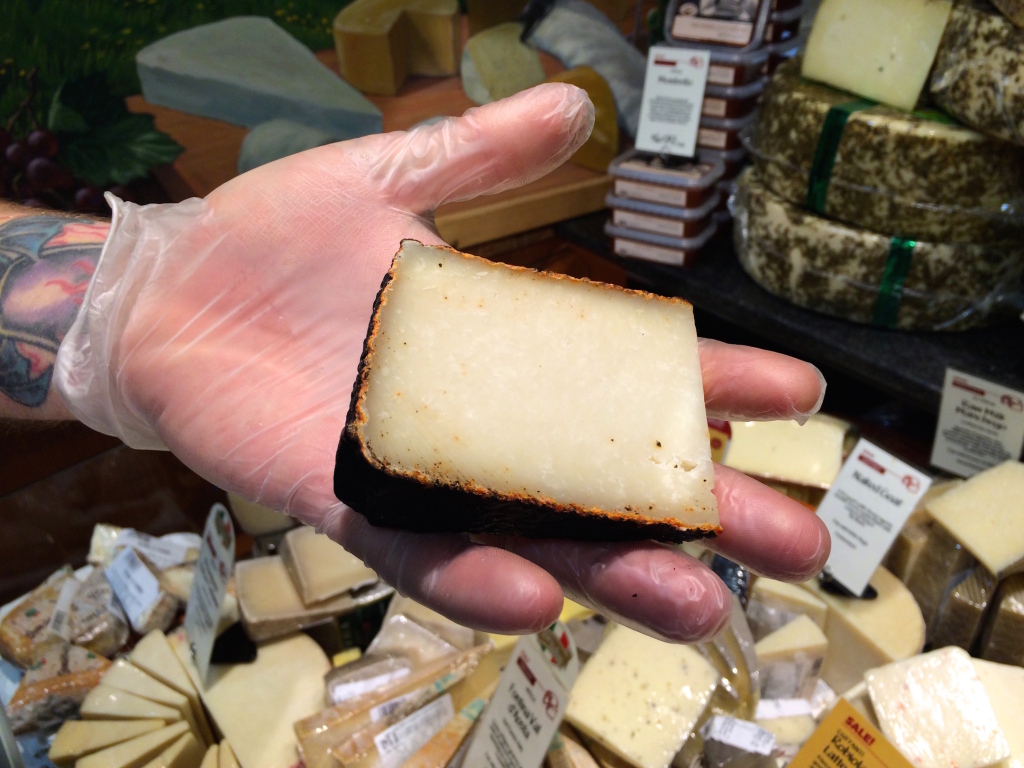
Photo by Juliet Paterek
There’s no doubt if you stop by and chat up a WFM cheesemonger, you’ll walk away with some amazing cheese and some new knowledge to impress your friends.
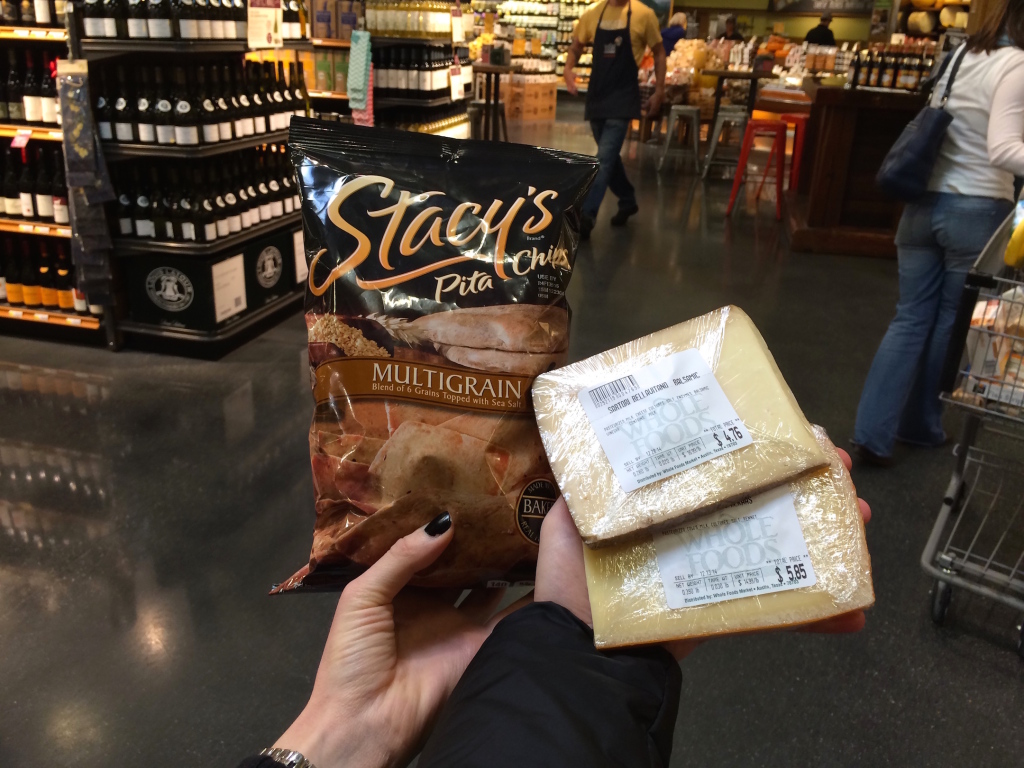
Sartori BellaVitano Balsamic & Robusto; Photo by Juliet Paterek
A huge thanks to Whole Foods Market for being a proud Spoon sponsor.


